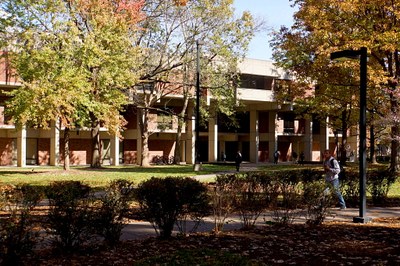Biology Department Background
 Welcome to the Department of Biology at the University of Louisville. Our diverse and growing department includes 23 faculty members and about 50 graduate students, and it has one of the largest undergraduate programs at the university, with over 850 majors. Faculty and students study how plants, animals, fungi, and bacteria function, how they interact, how they evolve and behave, and how they are affected by human activities. You can learn more about our research by exploring links to faculty.
Welcome to the Department of Biology at the University of Louisville. Our diverse and growing department includes 23 faculty members and about 50 graduate students, and it has one of the largest undergraduate programs at the university, with over 850 majors. Faculty and students study how plants, animals, fungi, and bacteria function, how they interact, how they evolve and behave, and how they are affected by human activities. You can learn more about our research by exploring links to faculty.
Our offices and laboratories are housed in the Life Sciences Building and the Shumaker Research Building. Several faculty also have appointments in a variety of basic science departments at the downtown Health Sciences campus, and a number of faculty work through centers of excellence in both ecological and molecular fields, such as the Kentucky Center for Sustainable Development and the Center of Predictive Medicine for Bio-defense and Emerging Infectious Diseases. Research facilities on campus include a rooftop greenhouse, animal and aquarium rooms, environmental chambers, and molecular genetics laboratories. The educational Harriet Korfhage Pollinator Garden lies on the west side of the Life Sciences Building. Nearby field research sites include the University's 200-acre Horner Wildlife Sanctuary in an adjacent county, the 14,000 acres of the private Bernheim Arboretum and Research Forest located thirty minutes south of campus, and Louisville's nationally recognized system of urban parks.
The faculty of our department are dedicated to creating a rich educational environment for our students. For undergraduates, we offer B.A. and B.S. degrees, and within the B.S. degree students can choose to emphasize ecology and evolution, genetics, or physiology. Graduate students can pursue M.S. and Ph.D. degrees, and our current graduate students' interests range widely, reflecting the diverse interests of our faculty.
The University of Louisville is one of the two major research universities in Kentucky, and the University's main campus, Belknap, occupies 320 acres about 2 miles south of downtown Louisville. The Louisville metropolitan area, which has a population of approximately 1.2 million, is a regional center for cultural activities in arts, education, and sports, with particularly varied offerings in live theater. It has a very moderate cost of living and a sterling park system, including a 6200-acre park that contains the largest municipally owned forest in the nation and several parks designed by Frederick Law Olmsted, who designed New York City's Central Park . Growing numbers of bike paths connect these parks.
